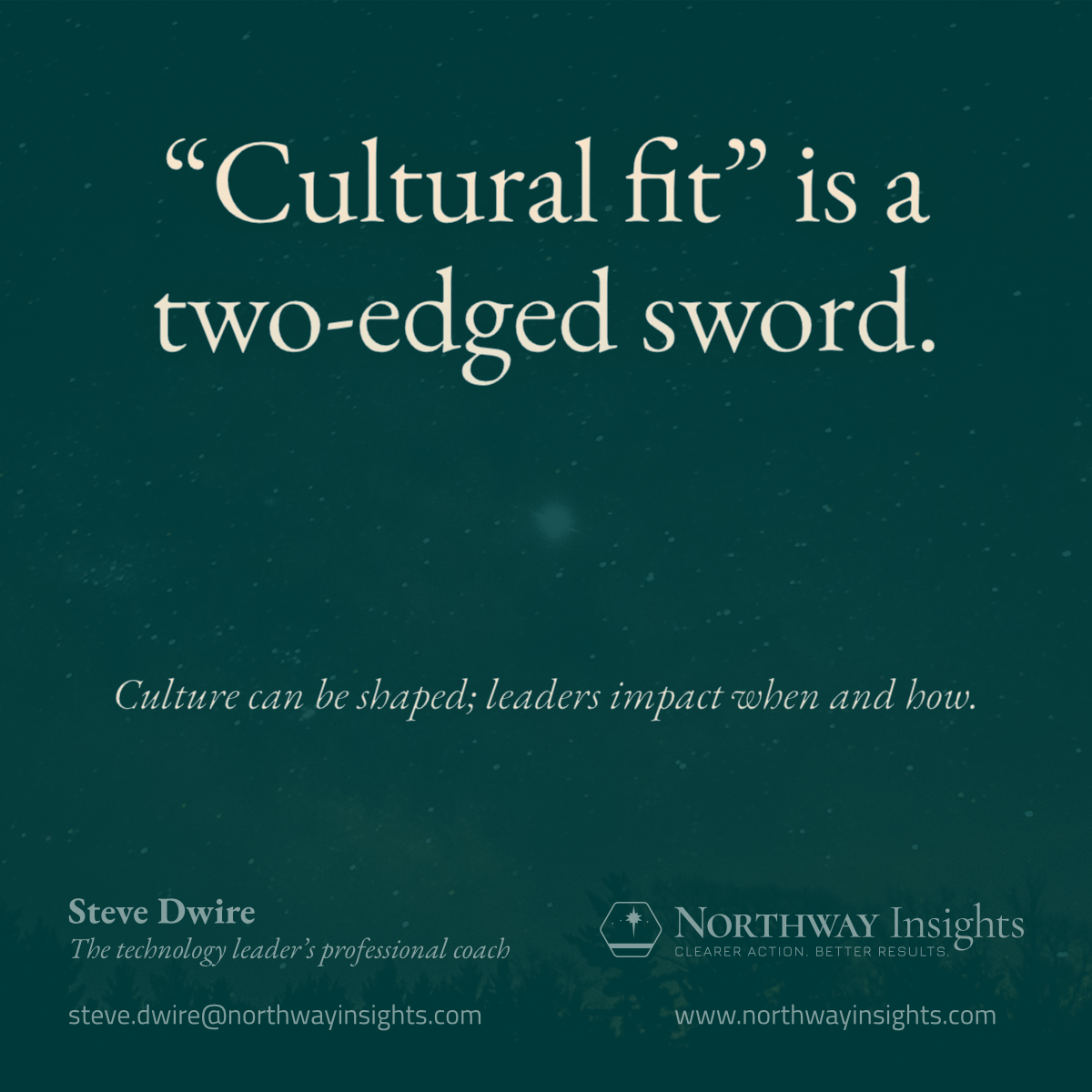Depending on who you talk to, hiring for “cultural fit” can be one of the most crucial factors or one of the most egregious mistakes.
In the same way, when you are mentoring someone or giving them feedback about their own cultural fit, the responsibility on your shoulder can be heavy with conflict. Not conflict between you and the other person, necessarily, but between different ideas and perspectives on the role of the current culture in your organization.
On one extreme, consider a culture where managers invest in learning their team members’ strengths, tendencies, and preferences and give them timely, actionable, and relevant feedback. Meetings start and stop on time, punctuality is valued, while failures and missteps are treated with grace and support. A manager who shows up late to their own meetings while scolding those who arrive even later would not be a “cultural fit” and could be due for some corrective feedback.
On another extreme, consider a culture built from a long-standing white, male dominance in a command-and-control leadership style. Even when senior leaders want to introduce servant leadership or embrace diversity, decisions for hiring, promotion, or correction can derail those goals when “cultural fit” becomes a criteria in those decisions.
Obviously those are extremes, and your workplace culture is likely a mix of things you want to keep and things you might prefer to change.
So, rather than looking at cultural fit, think about looking at value alignment.
And I don’t necessarily mean that a person’s individual values match the organization’s in detail and in priority. You’ll never be able to accurately decipher someone else’s values. But you can see whether their observable behaviors are aligned with organizational values, if those values are clearly defined.
OF course, there’s always the danger that senior leaders are themselves not living in alignment with those values, and that’s it’s own problem. But when you must make a judgment call on what you think is cultural fit, consider looking for values alignment instead.
And if you’d like a thinking partner to help you distill the desirable parts of your culture into articulated values that can guide your organizational behavior, let’s talk. Visit https://stevedwire.com/connect for a complimentary conversation.


Leave a Reply